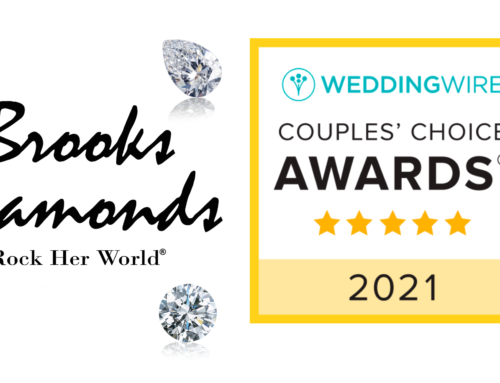Lab Created vs. Natural Diamonds
The US Federal Trade Commission, or FTC, classifies man-made (Lab Created) diamonds as “real” diamonds, due to the gem’s carbon-based chemical makeup. Diamond – the material, not the gem – is a mineral consisting of “essentially pure carbon crystalized in the isometric cubic system,” according to the U.S. Federal Trade Commission (FTC), which develops trading guides for the gem and jewelry industry. Lab created diamonds are identical to natural diamonds, with the same hardness, refractive index, and sparkle. They are graded using the same 4Cs and test as real diamonds. They are grown in factories using one of two sophisticated methods:
High Pressure, High Temperature (HPHT) diamonds are produced in a laboratory by mimicking the high pressure, high temperature conditions that form natural diamonds in the Earth. This process produces a distinctively shaped laboratory-grown diamond crystal. This is the older of the methods of growing diamonds in a lab. You can achieve a higher color grade with this method.
The Chemical Vapor Deposition (CVD) method involves breaking down the molecules of a carbon-rich gas, such as methane, into carbon and hydrogen atoms, which then are deposited on diamond seeds to produce a square-shaped, tabular diamond crystal.
Each method begins with the seed of a natural diamond as the starting point. Think of it like a baby grown in an incubator, it’s a real baby, just the methods of growth are different!
The best way to tell the difference is to check the diamond’s certification. Jewelers must declare whether a diamond is natural or Lab Created, so as long as you shop with a reputable store, you will always have this information available. Pay attention to this information, as it will have a significant impact on the price and resale value of your diamond!
If there is no visible difference between a Lab Created diamond and a natural diamond, which one should you go for? It’s hard to answer this question for everyone, as different people have different priorities. If appearance is literally the only factor that matters to you, then it doesn’t matter if a diamond is Lab Created or natural. Although identical in appearance to natural diamonds, they have very subtle differences that can only be detected by trained gemologists and sophisticated equipment designed for that purpose.
Here are the key differences:
PRICE
The price of Lab Created diamonds are constantly changing. That difference is due to supply. Natural diamond supply is limited, due to the billions of years it takes for the Earth to create a diamond. Yet with Lab Created diamonds, there is no cap on the supply, which drives the price lower and lower as supply goes up. Natural diamond prices have continually gone up in price over time.
VALUE
The difference in resale value between natural and Lab Created diamonds is even greater than the difference in price. While natural diamonds often retain around 50% of their initial value, Lab Created diamonds are almost impossible to resell without accepting pennies on the dollar. You lose a massive percentage of its value the moment you make the purchase. We also must consider how the cost of natural diamonds vs. Lab Created diamonds changes over time. With Lab Created diamonds dropping in price, and natural diamonds historically rising in value, your Lab Created diamond will almost certainly be worth less than a natural one of similar grade, even before considering the difference in resale value. As they become more popular, more are being made. They are not as limited as natural diamonds, therefore their value decreases as more are made. We are not sure the value of Lab Created diamonds as time goes on.
SUSTAINABILITY
Some may have concerns over the environmental and humanitarian repercussions of natural diamond mining processes. That’s not to say that natural diamonds are necessarily unethical. But it stands to reason that Lab Created diamonds offer more in the way of long-term sustainability than those pulled from the earth. There is some contention over this issue. In fact, the FTC warned a number of jewelers about making unsubstantiated claims of their jewelry being “sustainable” or “eco-friendly.” A report from the Diamond Producers Association claims that natural diamonds are, in fact, better for the environment than Lab Created diamonds, due to the carbon-intensive process used in the labs. All in all, it appears there is not a consensus just yet on whether Lab Created diamonds are actually a more sustainable option. Brooks Diamonds only works with Non-Conflict diamonds. Today, 99.8% of the worldwide trade of diamonds are non-conflict thanks to the Kimberley Process.
LOOK
Lab Created diamonds and natural diamonds are, for the most part, identical to the naked eye. If you buy a ring with a Lab Created diamond, it’s just about certain that no one will be able to notice that it is Lab Created, unless you tell them. There can be some very small inclusions on Lab Created diamonds that aren’t present in natural diamonds. It’s very rare for these inclusions to be visible unless using magnification tools. Lab Created diamonds are extremely clean and on the higher end of the color scale. Even a trained jeweler would need a magnification tool to tell the difference between a Lab Created or natural diamond. In just about every case, a lab diamond will have the same brilliance and look as a natural one, so if you’re primarily looking for a diamond that looks beautiful, Lab Created diamonds can present a low-cost option without settling for a lower grade stone!
Ultimately it is up to the customer’s discretion on whether to choose a Lab Created or natural diamond. Based on what you value most, you can find a beautiful diamond in either category!
To book an appointment to see Lab Created Diamonds give us a call in advance at 412.434.6007.
An appointment MUST be booked in advance to see Lab Created Diamonds, and is requested to see Natural Diamonds.
TLDR: The main difference between Lab Created and natural diamonds is resale value. Other than that they are almost identical. The choice is completely up to the buyer and what their priorities are when looking for a diamond. If you are looking for a larger size diamond at a lower price point, it may be for you! Either way we can find you the perfect diamond for you!
All information pulled from:
https://www.diamonds.pro/
The International Gemological Institute (https://www.igi.org/).
The Gemological Institute of America (https://www.gia.edu/).
https://www.kimberleyprocess.com/en/what-kp






Leave A Comment